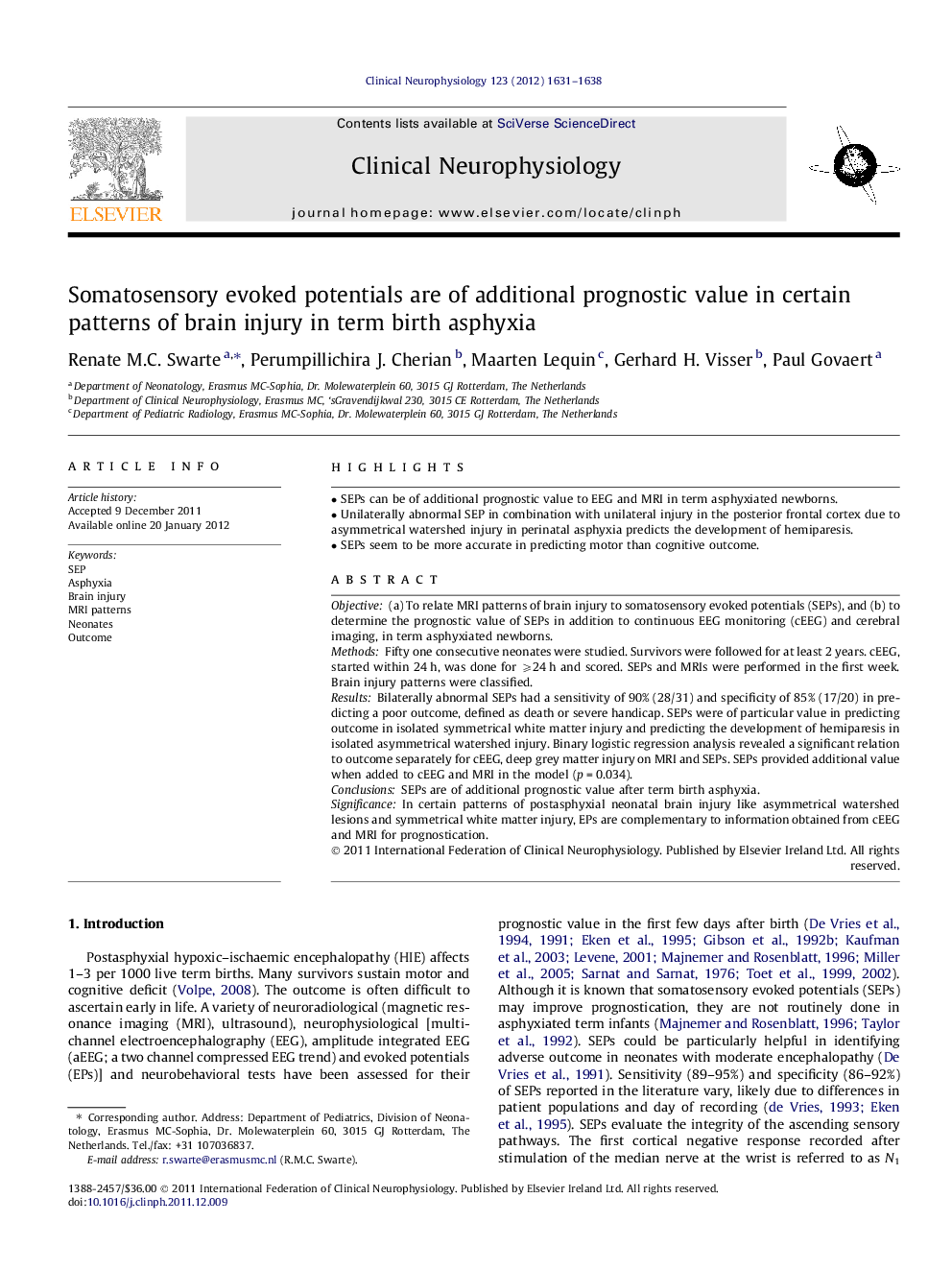| Article ID | Journal | Published Year | Pages | File Type |
|---|---|---|---|---|
| 3043430 | Clinical Neurophysiology | 2012 | 8 Pages |
Objective(a) To relate MRI patterns of brain injury to somatosensory evoked potentials (SEPs), and (b) to determine the prognostic value of SEPs in addition to continuous EEG monitoring (cEEG) and cerebral imaging, in term asphyxiated newborns.MethodsFifty one consecutive neonates were studied. Survivors were followed for at least 2 years. cEEG, started within 24 h, was done for ⩾24 h and scored. SEPs and MRIs were performed in the first week. Brain injury patterns were classified.ResultsBilaterally abnormal SEPs had a sensitivity of 90% (28/31) and specificity of 85% (17/20) in predicting a poor outcome, defined as death or severe handicap. SEPs were of particular value in predicting outcome in isolated symmetrical white matter injury and predicting the development of hemiparesis in isolated asymmetrical watershed injury. Binary logistic regression analysis revealed a significant relation to outcome separately for cEEG, deep grey matter injury on MRI and SEPs. SEPs provided additional value when added to cEEG and MRI in the model (p = 0.034).ConclusionsSEPs are of additional prognostic value after term birth asphyxia.SignificanceIn certain patterns of postasphyxial neonatal brain injury like asymmetrical watershed lesions and symmetrical white matter injury, EPs are complementary to information obtained from cEEG and MRI for prognostication.
► SEPs can be of additional prognostic value to EEG and MRI in term asphyxiated newborns. ► Unilaterally abnormal SEP in combination with unilateral injury in the posterior frontal cortex due to asymmetrical watershed injury in perinatal asphyxia predicts the development of hemiparesis. ► SEPs seem to be more accurate in predicting motor than cognitive outcome.
